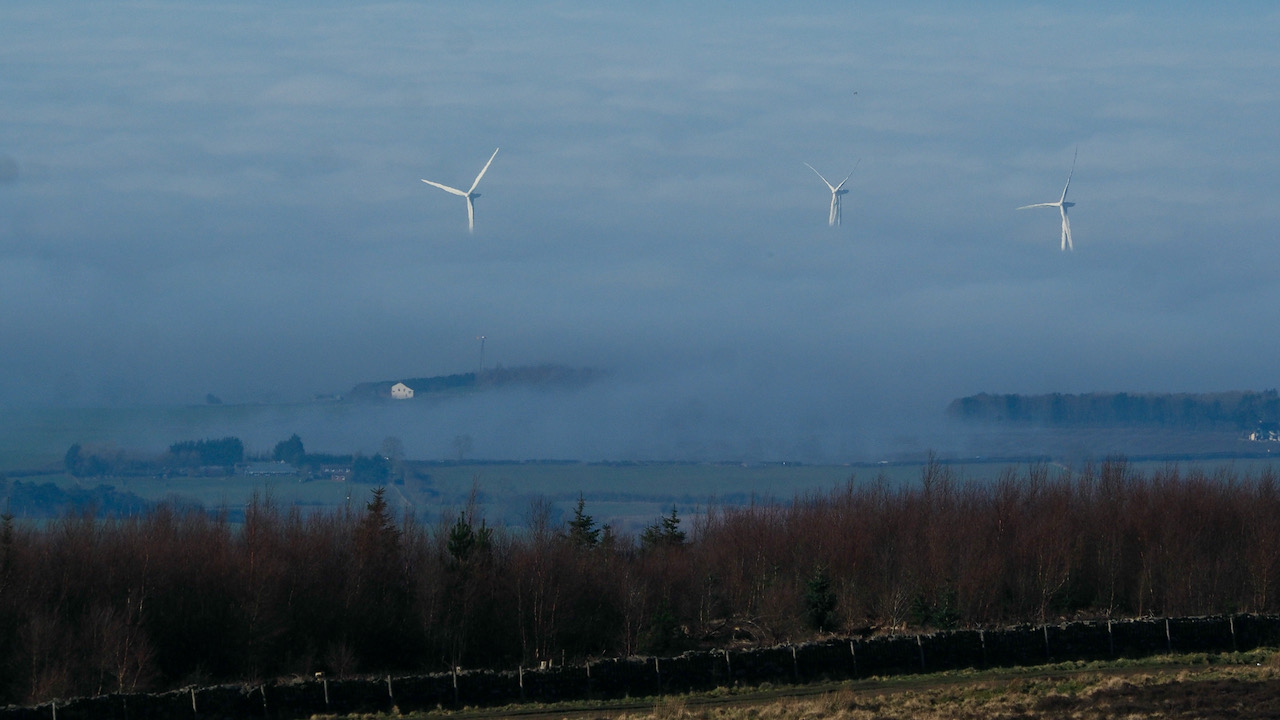This morning, the air on Great Ayton Moor was crystal clear, but away in the south-west, a low mist crept up the Vale of Cleveland, making the wind turbines at Seamer look like they’re levitating.
That white house yonder caught my eye. Turns out, it’s Howe Hill. Now, I can therefore take a brief detour into a tale about the Saxon Battle of Stokesley that supposedly went down in the 5th century at that very spot1‘Cleveland Re-Visited | Cleveland Standard | Saturday 07 January 1933 | British Newspaper Archive’. 2022. Britishnewspaperarchive.co.uk <https://www.britishnewspaperarchive.co.uk/viewer/bl/0003490/19330107/193/0010> [accessed 21 July 2022].
The battle has also been called the Battle of Seamer Caves and was fought between the Saxons and the Danes. Word is, it was Prince Arthur himself who gave the Saxons this thrashing in 492 A.D.
It seems the Saxons were keen on taking over this land, but the Britons stood their ground, causing hefty casualties. The Saxon commanders, Osca and Otha, were both slain, along with thousands of from both sides.
In the decades before the battle, the Britons, no longer under the protection of the Romans, took many a beating from the Saxons, who were being relieved by their kin from Germany. The triumph at Howe Hill, though, was short-lived. Despite the Britons’ victory, the Saxons kept pushing till they had carved out seven kingdoms known as the Heptarchy.
They say there was a stone marking the spot, but it’s sunken deep into the earth and doesn’t, in any case, have any inscription on it.
Now, that’s the legend, but what’s the facts? In the fields by the farm, 19th century reports mention a trench and how ploughs kept unearthing armour, swords, and human bones2GENUKI. 2024. ‘GENUKI: Seamer in Cleveland, Yorkshire (North Riding)’, Genuki.org.uk <https://www.genuki.org.uk/big/eng/YKS/NRY/SeamerInCleveland> [accessed 4 March 2024] [Description(s) edited mainly from various 19th century sources by Colin Hinson. ©2010]. In 1926, the Cleveland Naturalists’ Field Club found “part of the unburnt remains of a short round-headed man” in the tumulus at the farm3THE MOUND BREAKERS OF CLEVELAND BY WILLIAM HORNSBY, B.A., SALTBURN. Page 31. CLEVELAND NATURALISTS’ FIELD CLUB RECORD OF PROCEEDINGS 1920 – 1925 VOL.III. Part IV. 1926.. But, as far as I can maintain, all these finds seem to have now disappeared.
Much more recently, in summer 2020, a section through a ditch was excavated by local archaeologists and was found to contain pottery and other artefacts. The pottery suggests that the site was occupied by Saxons in the 5th to 6th centuries, but there was also evidence of earlier Roman and British activity in the area. It is speculated that the ditch may have been a boundary marker or a defensive ditch4Inman, Roger. Saxon pottery found at Howe Hill, near Stokesley. Hidden Valleys Community Project. Teesside Archaeological Society BULLETIN, 2021, No. 25 Page 26..
- 1‘Cleveland Re-Visited | Cleveland Standard | Saturday 07 January 1933 | British Newspaper Archive’. 2022. Britishnewspaperarchive.co.uk <https://www.britishnewspaperarchive.co.uk/viewer/bl/0003490/19330107/193/0010> [accessed 21 July 2022]
- 2GENUKI. 2024. ‘GENUKI: Seamer in Cleveland, Yorkshire (North Riding)’, Genuki.org.uk <https://www.genuki.org.uk/big/eng/YKS/NRY/SeamerInCleveland> [accessed 4 March 2024] [Description(s) edited mainly from various 19th century sources by Colin Hinson. ©2010]
- 3THE MOUND BREAKERS OF CLEVELAND BY WILLIAM HORNSBY, B.A., SALTBURN. Page 31. CLEVELAND NATURALISTS’ FIELD CLUB RECORD OF PROCEEDINGS 1920 – 1925 VOL.III. Part IV. 1926.
- 4Inman, Roger. Saxon pottery found at Howe Hill, near Stokesley. Hidden Valleys Community Project. Teesside Archaeological Society BULLETIN, 2021, No. 25 Page 26.

Leave a Reply